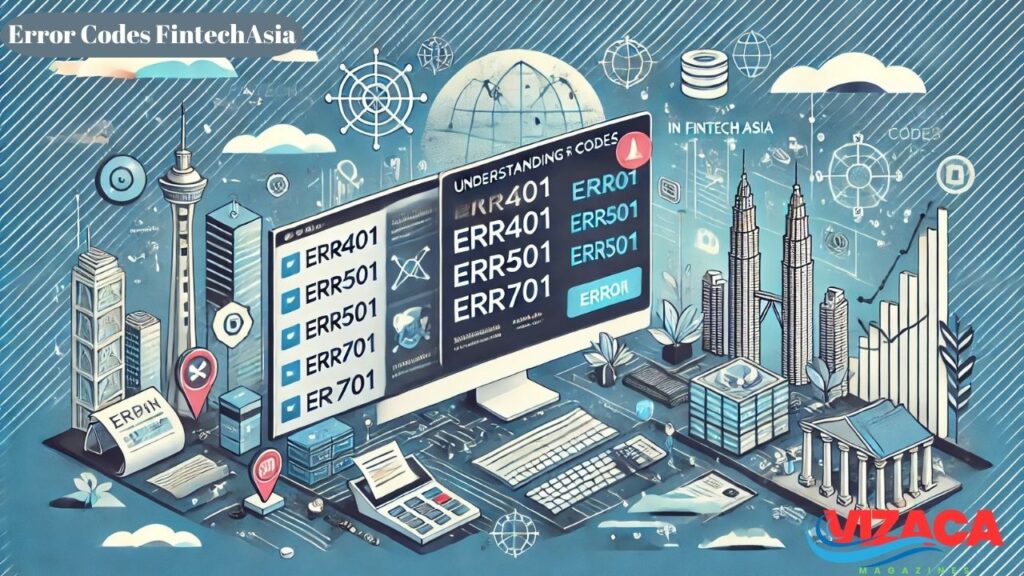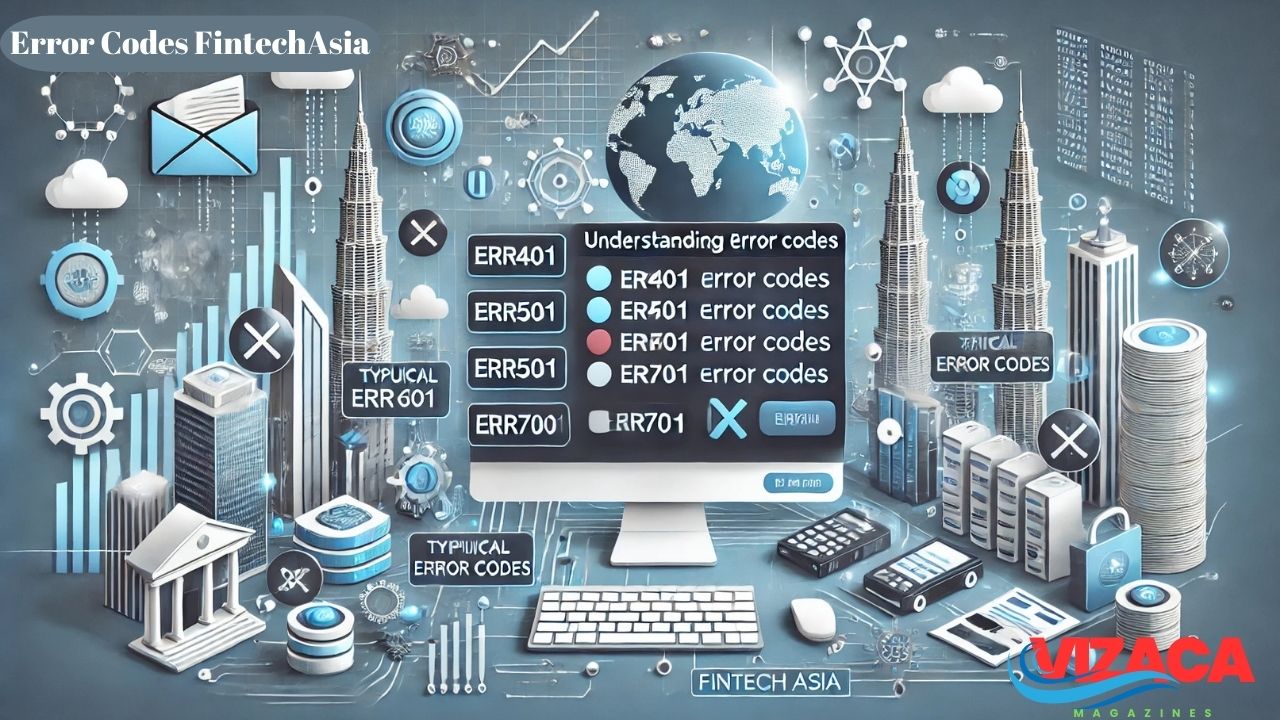Understanding Error Codes FintechAsia
Introduction to Error Codes FintechAsia
In today’s highly digital financial landscape, real-time transactions, online banking, and fintech solutions are becoming the norm. However, with technological advancement comes complexity—and with complexity, inevitably, come errors. “Error codes FintechAsia” is a term that has gained prominence among developers, financial professionals, and digital banking stakeholders across Asia and beyond. These error codes act as signposts, pointing toward underlying issues in fintech systems that must be addressed promptly.
This article delves deeply into the world of error codes FintechAsia. We will explore the types of error codes most commonly encountered, their meanings, causes, and the strategies for troubleshooting them effectively. Whether you’re a fintech developer, a system analyst, or an operations manager, this comprehensive breakdown will provide actionable insights tailored to your role.
What Are Error Codes FintechAsia?
Error codes FintechAsia are standardized or semi-standardized identifiers used within fintech systems to indicate the nature of an error. These codes can be numeric, alphanumeric, or symbolic and are used across platforms for consistency in diagnosing problems. They serve as a communication bridge between the software and its human operators.
Whether you are working with API integrations, online payment gateways, banking systems, or financial analytics platforms, understanding error codes FintechAsia is crucial for seamless operations. These codes not only help in identifying issues but also streamline the debugging process, enhance security protocols, and reduce downtime.
Classification of Error Codes FintechAsia
To understand and interpret error codes FintechAsia effectively, one must first know how they are classified. Typically, these error codes fall into several major categories:

1. Authentication Errors
These errors usually indicate issues related to user identity verification. Common examples include:
- ERR401: Unauthorized access
- ERR403: Forbidden access
- ERR422: Unprocessable entity due to incorrect credentials
2. Transaction Failures
These error codes emerge when a transaction doesn’t complete successfully.
- ERR501: Payment gateway timeout
- ERR502: Insufficient balance
- ERR506: Duplicate transaction detected
3. System-Level Errors
System errors are internal faults within the software or hardware infrastructure.
- ERR601: Server overload
- ERR602: Database connection lost
- ERR610: Memory allocation failure
4. Integration Errors
These errors are specific to API and third-party service integration failures.
- ERR701: API authentication token expired
- ERR702: Mismatched API schema
- ERR709: Invalid API key
Common Scenarios That Trigger Error Codes FintechAsia
Error codes do not appear randomly; they are the result of specific user actions, system configurations, or external conditions. Some frequent scenarios include:
- Network Failures: Poor connectivity can result in ERR501 or ERR601.
- Expired Sessions: Timeouts often lead to ERR401 or ERR701.
- Incorrect Data Input: Validation errors, such as ERR422, occur when input does not match required formats.
- Security Breaches: Attempts at unauthorized access trigger ERR403 or ERR506.
- Integration Mismanagement: Incorrect API calls or outdated tokens can cause ERR702 or ERR709.
How to Troubleshoot Error Codes FintechAsia
The ability to troubleshoot error codes effectively can save both time and resources. Here’s a general approach to resolving these issues:
Step 1: Identify the Error Code
The error message will usually include a specific code. Note it down accurately.
Step 2: Consult Documentation
Most fintech platforms offer extensive documentation. Use it to interpret the code.
Step 3: Log Analysis
Review system logs for surrounding events that could shed light on the error’s origin.
Step 4: Replicate the Issue
Try to recreate the error in a controlled environment to observe behaviors.
Step 5: Apply Fixes
Depending on the root cause, apply appropriate solutions such as resetting tokens, fixing schema mismatches, or updating security credentials.
Step 6: Test and Monitor
After applying a fix, test extensively and monitor system performance to ensure the issue is resolved.
The Impact of Error Codes FintechAsia on Business Operations
Ignoring or mishandling error codes can have significant ramifications. Here are some of the ways they impact business:
- Customer Trust: Frequent errors reduce user confidence in your platform.
- Revenue Loss: Failed transactions and downtime directly affect profitability.
- Operational Delays: Time spent debugging can disrupt schedules.
- Compliance Risks: Some errors may breach regulatory standards, especially related to security.
- Reputational Damage: Public exposure of errors can harm brand image.
Proactively managing and minimizing error codes FintechAsia should be a core component of your operational strategy.
Best Practices for Managing Error Codes FintechAsia
- Implement Robust Logging Mechanisms: Ensure that all errors are logged with timestamps and user/session details.
- Automated Alerts: Use alert systems that notify administrators when critical errors occur.
- Error Code Documentation: Maintain internal documentation for custom error codes used within your system.
- Regular Code Audits: Periodically review code and API integrations for vulnerabilities.
- User-Friendly Messages: Display user-friendly versions of error messages while logging the technical details internally.
- Cross-Department Coordination: Ensure that both technical and non-technical teams understand the implications of specific error codes.
Future Trends in Error Codes FintechAsia
As fintech ecosystems grow more sophisticated, so too will the systems that generate and manage error codes. Anticipated future developments include:
- AI-Based Error Diagnosis: Artificial intelligence will play a role in predicting and diagnosing errors in real time.
- Standardization Across Platforms: Unified error code protocols across fintech platforms for better interoperability.
- Self-Healing Systems: Advanced platforms may resolve common error codes automatically without human intervention.
- Blockchain Integration: Secure logging of error events using blockchain for tamper-proof diagnostics.
Case Studies: Real-World Applications of Error Codes FintechAsia

Case Study 1: Payment Gateway in Singapore
A leading digital wallet provider faced recurring ERR501 issues. On investigation, the problem was linked to network throttling during peak hours. The company implemented load balancing and resolved the issue.
Case Study 2: API Integration for Indian Bank
A major Indian bank encountered ERR709 due to a mismatch in API versions. Updating the API schema and improving version control protocols resolved the issue within 24 hours.
Case Study 3: Fintech Startup in Indonesia
A startup experienced ERR422 frequently due to incorrect KYC form validations. Updating the form logic and adding client-side validation minimized these errors by 80%.
Conclusion: Mastering Error Codes FintechAsia for Seamless Operations
Understanding and managing error codes FintechAsia is no longer optional—it is a necessity. From authentication to integration issues, error codes provide critical insights that can mean the difference between operational success and failure. By adopting a strategic, informed approach to handling these error codes, businesses can improve performance, ensure compliance, and enhance user satisfaction.
Whether you are a developer debugging backend systems or a project manager overseeing a fintech rollout, mastering error codes FintechAsia equips you with the tools needed to succeed in the fast-evolving digital financial landscape.
Also Read: Stream2Watch: A Complete Guide, Stream2Watch Alternatives, and In-Depth Stream2Watch Review





